This post may contain affiliate links. See our disclosure policy.
Sourdough bread is better than ordinary yeast bread when it comes to taste, texture, and nutrition. Follow this easy recipe to learn how to bake sourdough bread at home.
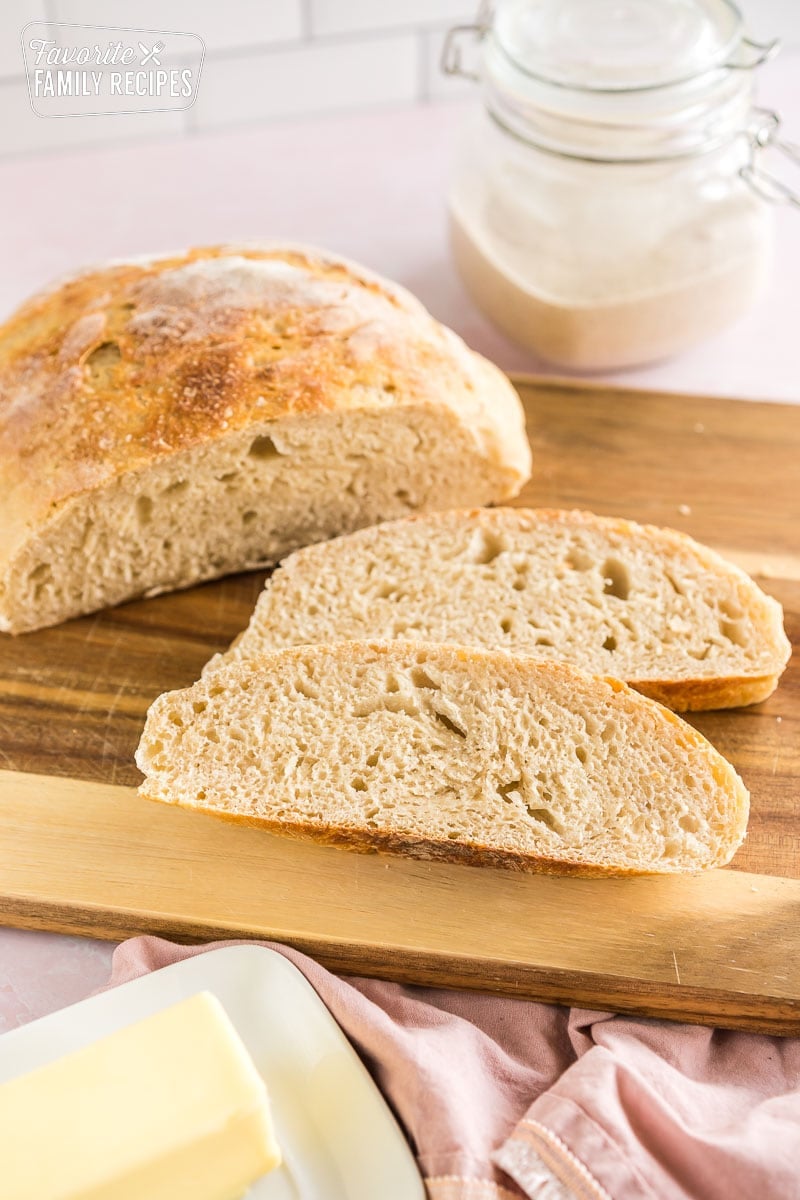
Featured with this recipe
Sourdough bread can be very intimidating if you’re not a professional baker. I avoided learning how to make it for years because it just seemed too hard! However, I am so glad I finally learned. Sourdough bread is so delicious and once you have your method down it is really simple to make. It takes more time, but a lot of that time is resting and rising, so you aren’t working on it the whole time. This post will guide you through the process of sourdough and before you know it you’ll be making your own delicious loaves! The recipe at the bottom of this post is one of my favorite easy sourdough bread recipes. The majority of the rising happens overnight, so you can wake up and get your bread baking.
Ingredients in Sourdough Bread
- Sourdough Starter – See instructions below for how to start and maintain a sourdough starter. Sourdough starter is the rising agent in sourdough bread. It also adds a ton of flavor.
- Water – Use filtered water for the best taste.
- Flour – Sourdough can be made with other wheat flours like whole wheat flour or bread flour, but I use white all-purpose flour for this recipe.
- Salt – Fine grain salt is best for this recipe.
Tools for Making Sourdough
Using the right tools makes the baking process so much easier! Below is a complete list of tools I use when baking sourdough bread. Some are must-haves and some are nice-to-haves.
Must Haves
- Jar for sourdough starter – A glass jar with a lid is the best jar for a sourdough starter. The bacteria from the starter can eat at other jar materials over time.
- Large Mixing bowl
- Kitchen towel
- Food scale – Precision is key when measuring sourdough ingredients. The ingredients in most sourdough recipes are listed in grams and milliliters, so you will want to pick up a food scale to get exact measurements.
- Dutch oven or casserole dish – You will need a dutch oven or other deep casserole dish with a lid to bake this bread.
- Parchment Paper
Nice To Haves
- Dough Whisk – A dough whisk is not necessary, but I find that it mixes the initial dough together the best! A wooden spoon is my second choice if I don’t have a dough whisk.
- Bench Scraper – A bench scraper will make it easy to scoop the dough from the counter into the proofing basket.
- Proofing Basket – Proofing baskets help the rising loaf to form into the right shape.
- Lame – A lame or some razor blades are the best tools for scoring the top of the loaf. You can also use a very sharp knife.
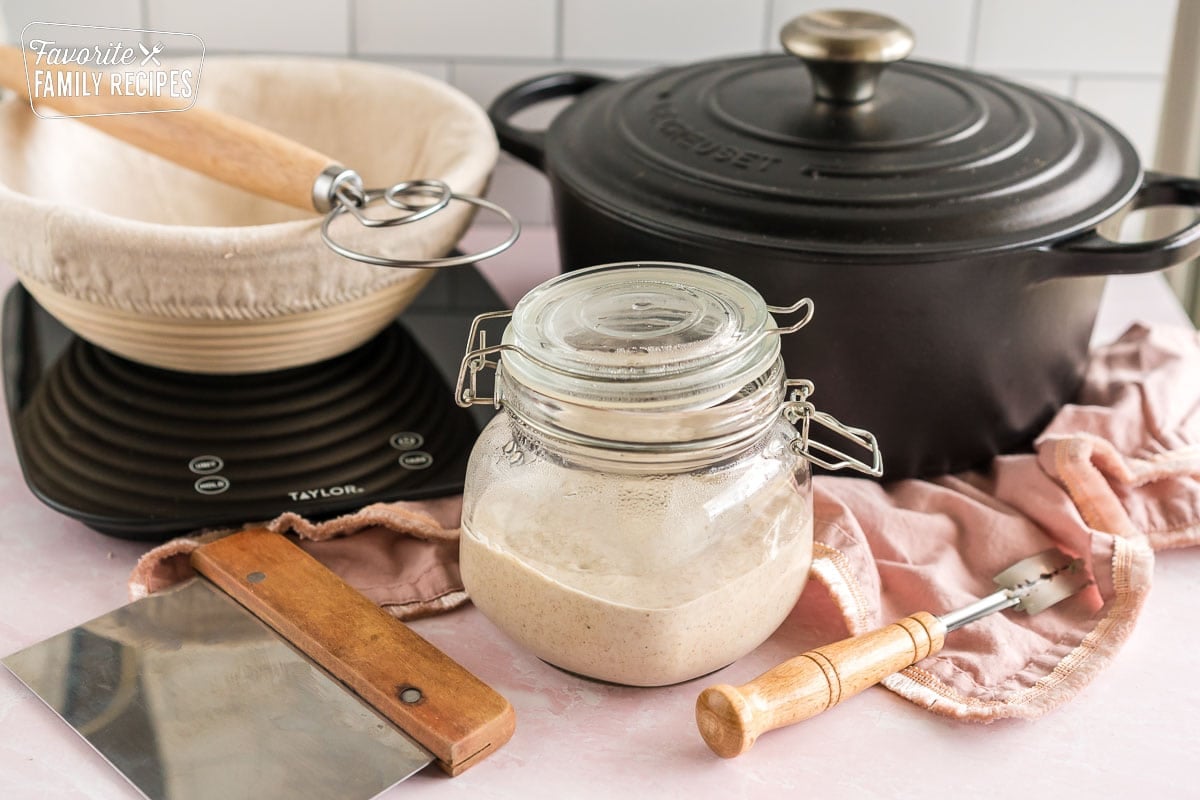
How to Obtain and Maintain a Sourdough Starter
Obtaining a Sourdough Starter
Obtaining a sourdough starter is the first and most important step of any sourdough journey. The starter is the rising agent and the flavor agent of sourdough bread. There are a few different ways to get your hands on a sourdough starter.
- The easiest way is to ask around your friends and neighbors to see if anyone has a starter they can share. A healthy, active starter is easy to share and easy to maintain.
- Buy a dehydrated starter. You can buy packets of dehydrated starter in some stores or online. I got my most recent sourdough starter from The Food Nanny. The Food Nanny sells her starter, called Etta, in her store and online. It has enough starter to start 3 starters, so make some and share some with friends or family. Your starter should come with instructions for rehydrating and maintaining.
- Make your own starter. You can actually make your own sourdough starter. I do not recommend this route for beginners. It is a more involved process and it takes a while to introduce all the bacteria needed and get it active. If you are wanting to try this method, there are many resources online that detail how to make your own starter.
Maintaining a Sourdough Starter
Once you have your hands on a sourdough starter, you will need to feed it to keep it alive. Think of it as your new little pet. To feed your sourdough starter, first discard all but about 2 tablespoons of the starter. You can keep the discard to make sourdough discard recipes, or just toss it. Then add 50 grams of flour and 50 grams of water. Stir together until combined. It should look and feel like a thick pancake batter.
How Often Should I Feed My Starter?
How often you feed your starter depends on how often you want to bake bread. I like to bake bread once a week, so I feed my starter once a week. When I am not feeding it or using it, I keep it in the fridge. Starter can be kept in the refrigerator for up to two weeks without feeding. Even if you are not baking bread, you need to feed your starter at least once every two weeks to keep it active.
When is my starter ready to bake with?
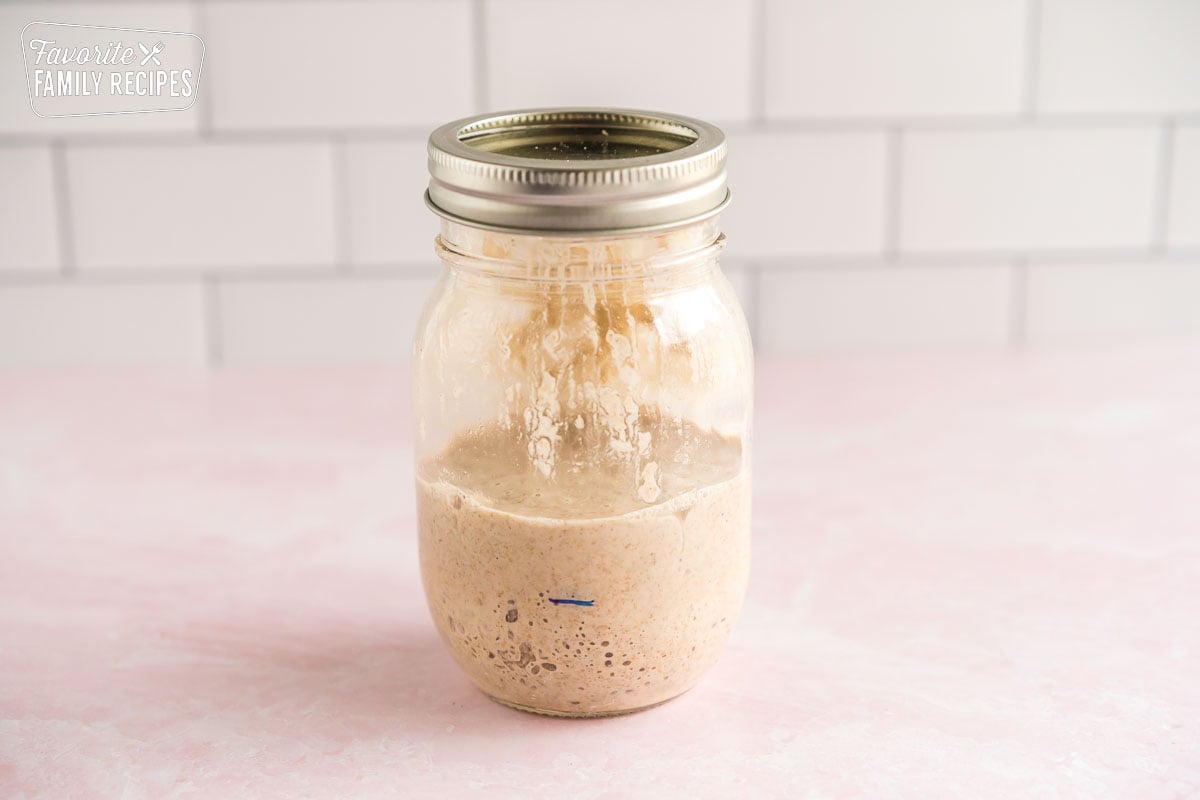
After feeding, let the starter sit on the counter for 8-15 hours. The starter is ready to use when it has doubled or more in size and is full of bubbles, like in this picture. You can see where I indicated the starting height with a little marker line. You can also test it for readiness by putting a teaspoon of starter into a glass of water. If the starter floats, it is ready!
Sourdough Starter Troubleshooting
If you are having trouble with your starter, there are a few main culprits. First is temperature. Sourdough starter becomes active at “room temperature”, but not all room temperatures are created equal. “Room temperature” for good sourdough is 70 to 80 degrees. If your kitchen is cooler than that, then you can place the starter in the oven with the oven light turned on. Just don’t accidentally turn the oven on while the start is in there! Too much heat can kill the yeast. If your starter still isn’t bubbling up, try replacing half the flour with rye flour next time you feed it. Rye flour helps convert the sugar quicker and more efficiently. Eventually, your starter will be strong enough to go back to all white flour.
Important Note
Now that you know all the ingredients and tools you need to make sourdough bread, you are almost ready to get started! But first, remember that sourdough is a process. Every starter and loaf is a little different. Where you live, how warm or cold you keep your house, and time of year can all be a factor in the rising times of your starter and your loaves. The times listed in this sourdough bread recipe are approximate and based on my kitchen climate. Pay more attention to the description of how the starter and dough should look and feel. Accept that your first few loaves might be duds! It is okay! Try to enjoy the process of learning a new skill.
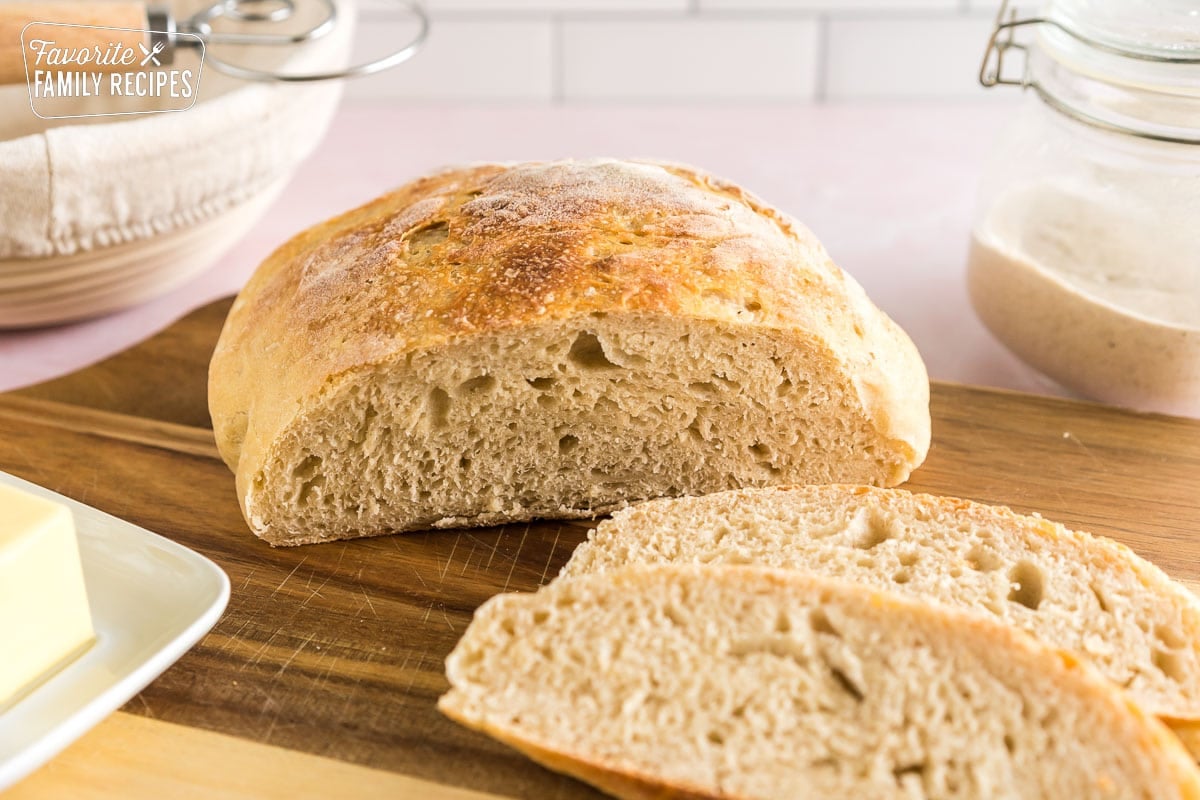
Questions About Sourdough Bread
Sourdough bread is very nutrient-rich and the bacteria in the starter is good for your gut health. Homemade sourdough bread also doesn’t have the additives and preservatives of store bought bread.
Regular bread uses commercial yeast to create the air bubbles necessary for proper rising. Sourdough bread uses naturally occurring yeast, or wild yeast, and other bacteria.
Sourdough is popular for a few reasons – it uses relatively few ingredients, it tastes amazing, and it is fun to make. Give it a try and find out why so many people love making sourdough!
Read Next: 35+ Easy Lunch Ideas
More Bread Recipes
How to Make Sourdough Bread
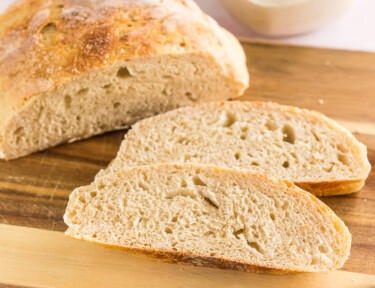
Sourdough Bread
Equipment
- Mixing Bowl
- Dutch oven or deep casserole dish with lid
- Wire racks for cooling
Ingredients
- 50 grams active, bubbly sourdough starter see post for details
- 400 milliliters warm water
- 600 grams all purpose flour
- 10 grams salt fine grain
Instructions
- Start with an active, bubbly starter. In a large mixing bowl, whisk together the starter and water. Add flour and mix with a dough whisk or wooden spoon until a dough forms. Cover with a dish towel and let the dough rest for 30 minutes.

- Add salt to the dough and mix until fully incorporated. With wet hands, pull from one corner of the dough. Stretch it and fold it over into the middle. Try to trap as much air as you can. Rotate the bowl 45 degrees and repeat 8-10 times. Cover the bowl with a damp kitchen towel or plastic wrap and let sit at room temperature for 8-10 hours overnight. This is called bulk fermentation. You'll know the dough is fully risen when it is light and fluffy with lots of bubbles. It should more than double in size.
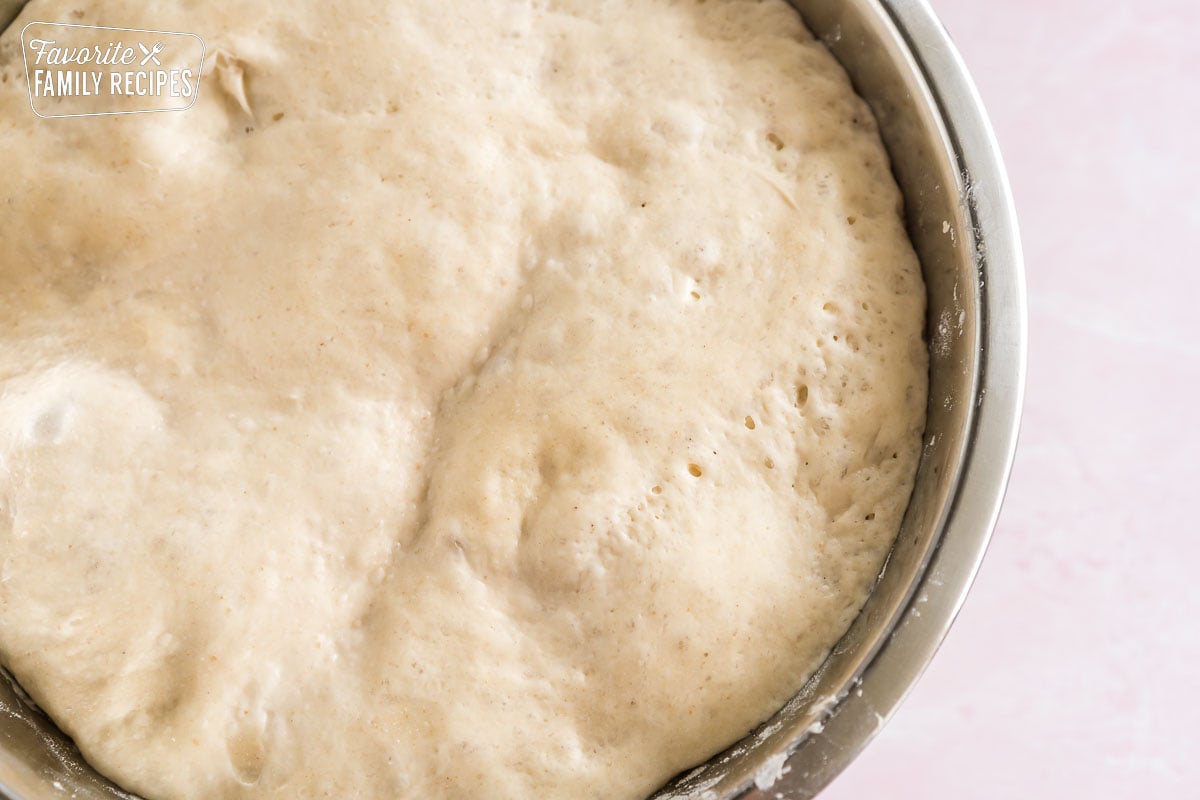
- Tip the dough out onto a lightly floured surface. It will stick to the bowl, but you can use your hands to ease it away. Repeat the pulling and folding from the previous step until a dough ball forms. The stretching and folding helps build strong, tall gluten strands. Place the dough ball into a floured proofing basket.
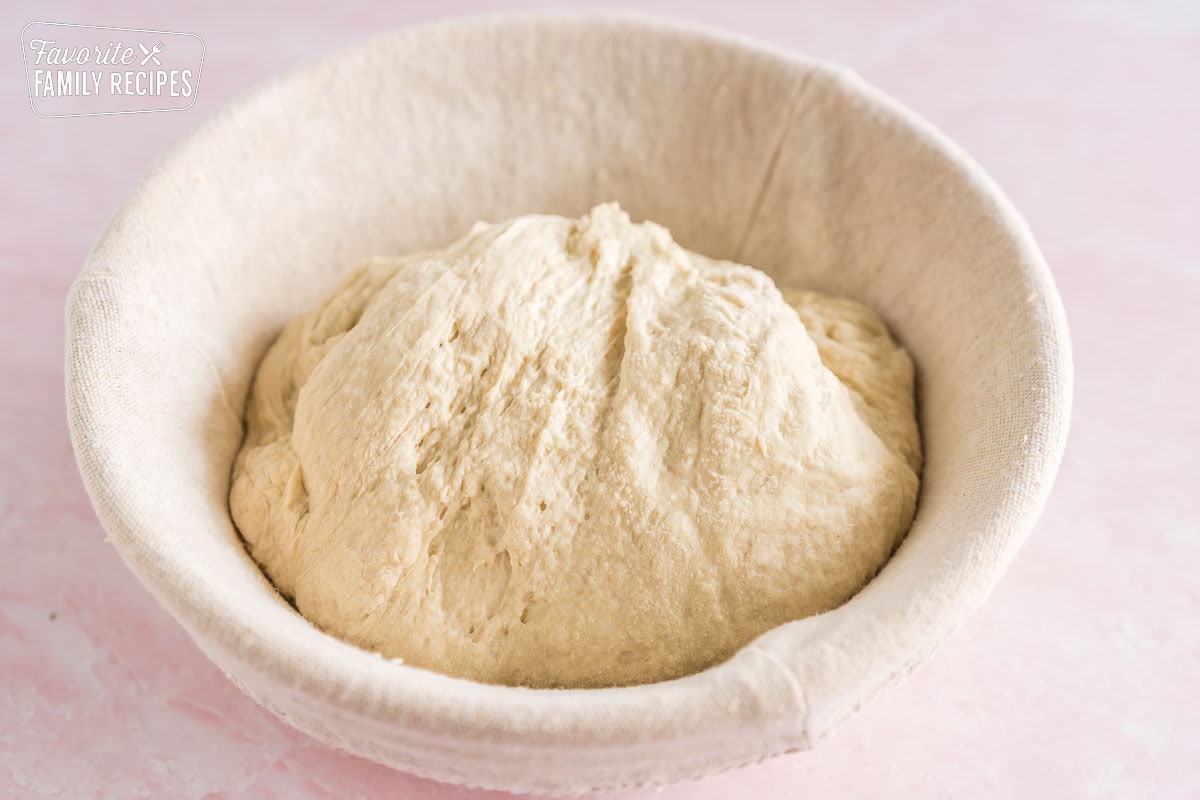
- Cover with a dish towel and let the dough rise for an hour. The dough should rise again and become soft and bubbly. Preheat the oven to 450 during this time.
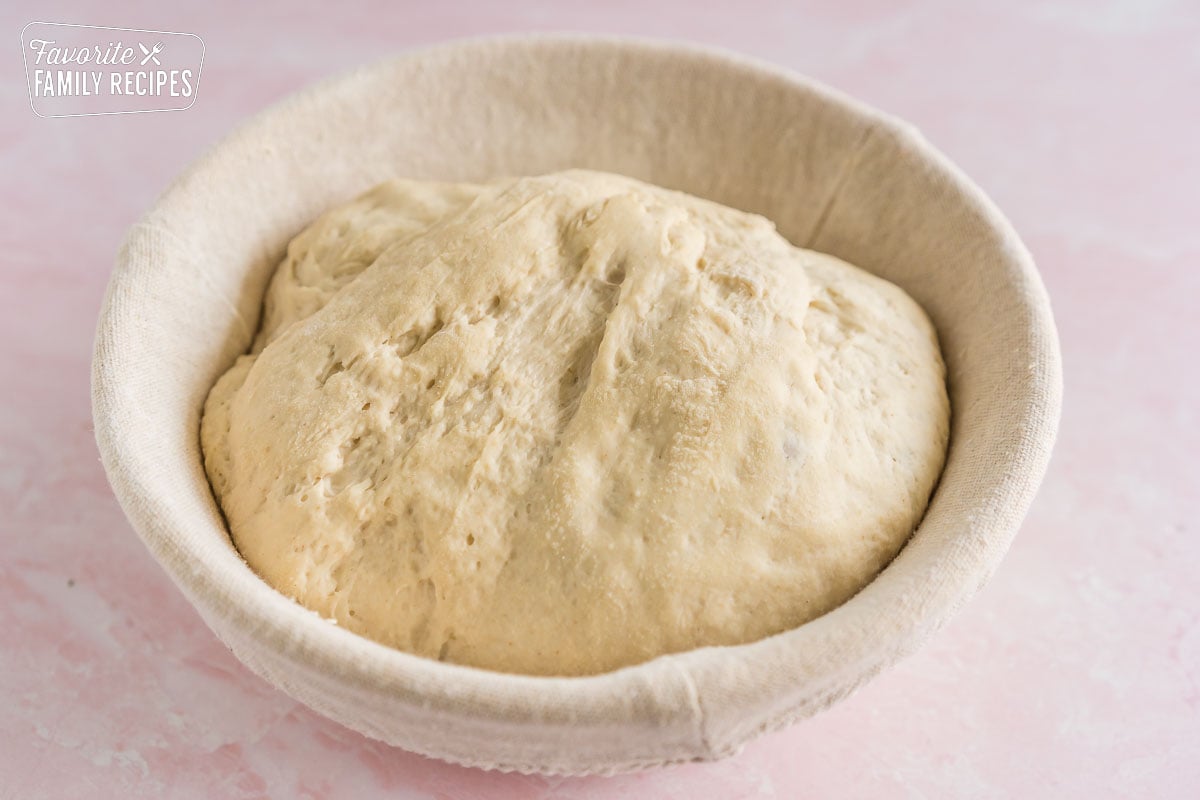
- Tip the dough out onto a piece of parchment paper. Place the parchment paper in the Dutch oven and make a few cuts in the top of the loaf with a lame, razor blade, or sharp knife.
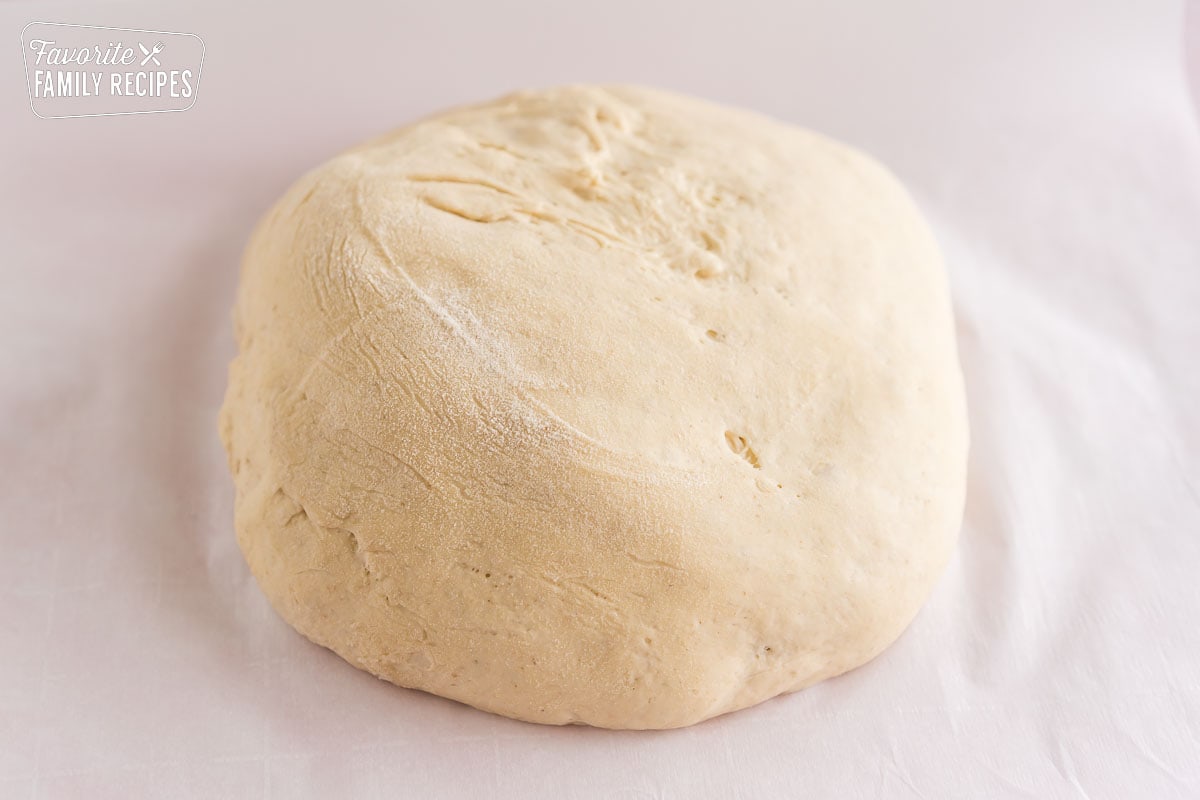
- Place the Dutch oven on the middle shelf in the oven and bake with the lid on for 20 minutes. Then, remove the lid and bake for 25 more minutes. You will know it is done when the crust is golden brown and when you knock on the bottom of the loaf, the inside sounds hollow. If it is not done after 25 minutes, place the loaf back in the oven directly on the oven shelf and bake for 5-10 more minutes. Remove from the pot or oven and cool on a wire rack for 1 hour.
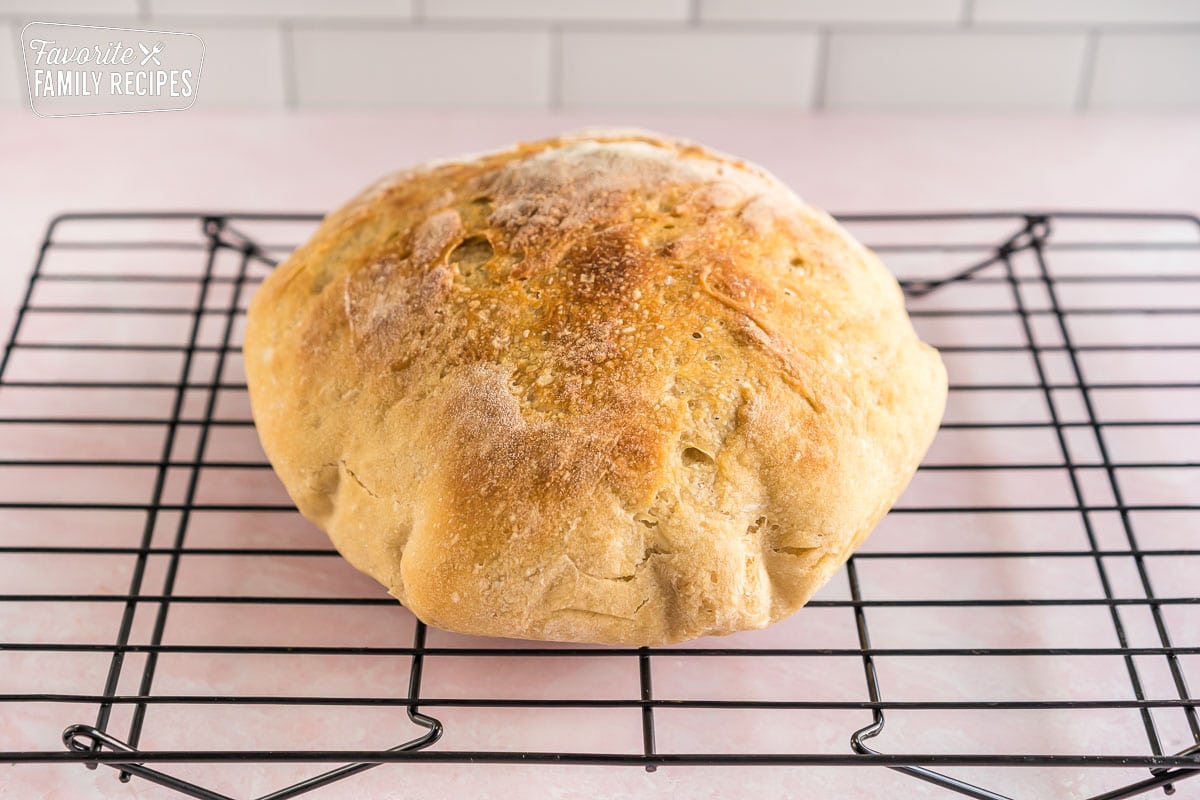
- Slice and serve! To store leftovers, wrap with plastic wrap. For long term storage, slice the bread and freeze in an airtight container.

Notes
- Every starter and loaf is a little different. Where you live, how warm or cold you keep your house, and time of year can all be a factor in the rising times of your starter and your loaves.
- The times listed in this sourdough bread recipe are approximate and based on my kitchen climate. Pay more attention to the description of how the starter and dough should look and feel.
- Accept that your first few loaves might be duds! It is okay! Try to enjoy the process of learning a new skill.
I’m so happy I found this recipe and can now make sourdough bread at home! It was so easy and the bread came out perfectly!! Thank you for sharing!
This sourdough bread is enough to fill me for breakfast. I also love pairing it with hot choco or tea.
I’ve always struggled with making sourdough bread but with this recipe it felt so easy and it turned out great.